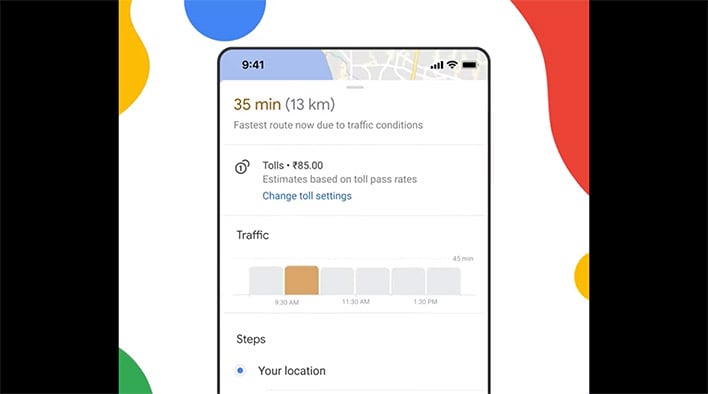Google Maps Finally Gets This Handy Feature To Estimate The Cost Of Your Road Trip

Road trips are expensive and it can be challenging to figure out beforehand how much your journey will truly cost. There is now a neat feature that will help you plan out your road trips more thoroughly. Google Maps will show toll prices to those who input their destination.
The new feature will be available on Android and iOS devices and is intended “to help make the choice between toll roads and regular roads easier.” Users will be able to see the estimated toll price to their destination before they even begin navigating. Google Maps will consider a variety of factors before providing the estimate and recommending a route. It will look at where there is a “toll pass or not, what the day of the week it is, along with how much the toll is expected to cost at the specific time you’ll be crossing it.”
Users will also have the option to select “Avoid Tolls,” as they have had in the past. The toggle for toll prices will be on by default. However, users will be able to disable toll prices under Settings>Navigation should they so choose.
 Google Maps users will begin to see the toll estimates over the next few weeks. The estimates will cover over 2,000 toll roads in the United States, India, Japan, and Indonesia. Google promises that more countries will be available soon.
Google Maps users will begin to see the toll estimates over the next few weeks. The estimates will cover over 2,000 toll roads in the United States, India, Japan, and Indonesia. Google promises that more countries will be available soon.
Google Maps added a slew of features last year to improve navigation. For example, one feature adds a “weather layer” so that users may “quickly see current and forecasted temperature and weather conditions in an area.” Users can also look at the air quality in a specific location. Another handy feature is the ability to choose eco-friendly transportation. Users are able to see how long it will take to travel to a destination by car, public transit, or bike all without needing to toggle between tabs. Google Maps is working with the United States Department of Energy’s National Renewable Energy Lab as well to suggest routes that “[optimize] for lower fuel consumption based on factors like road incline and traffic congestion.”
Top image courtesy of Google
The new feature will be available on Android and iOS devices and is intended “to help make the choice between toll roads and regular roads easier.” Users will be able to see the estimated toll price to their destination before they even begin navigating. Google Maps will consider a variety of factors before providing the estimate and recommending a route. It will look at where there is a “toll pass or not, what the day of the week it is, along with how much the toll is expected to cost at the specific time you’ll be crossing it.”
Users will also have the option to select “Avoid Tolls,” as they have had in the past. The toggle for toll prices will be on by default. However, users will be able to disable toll prices under Settings>Navigation should they so choose.

Google Maps added a slew of features last year to improve navigation. For example, one feature adds a “weather layer” so that users may “quickly see current and forecasted temperature and weather conditions in an area.” Users can also look at the air quality in a specific location. Another handy feature is the ability to choose eco-friendly transportation. Users are able to see how long it will take to travel to a destination by car, public transit, or bike all without needing to toggle between tabs. Google Maps is working with the United States Department of Energy’s National Renewable Energy Lab as well to suggest routes that “[optimize] for lower fuel consumption based on factors like road incline and traffic congestion.”
Top image courtesy of Google

